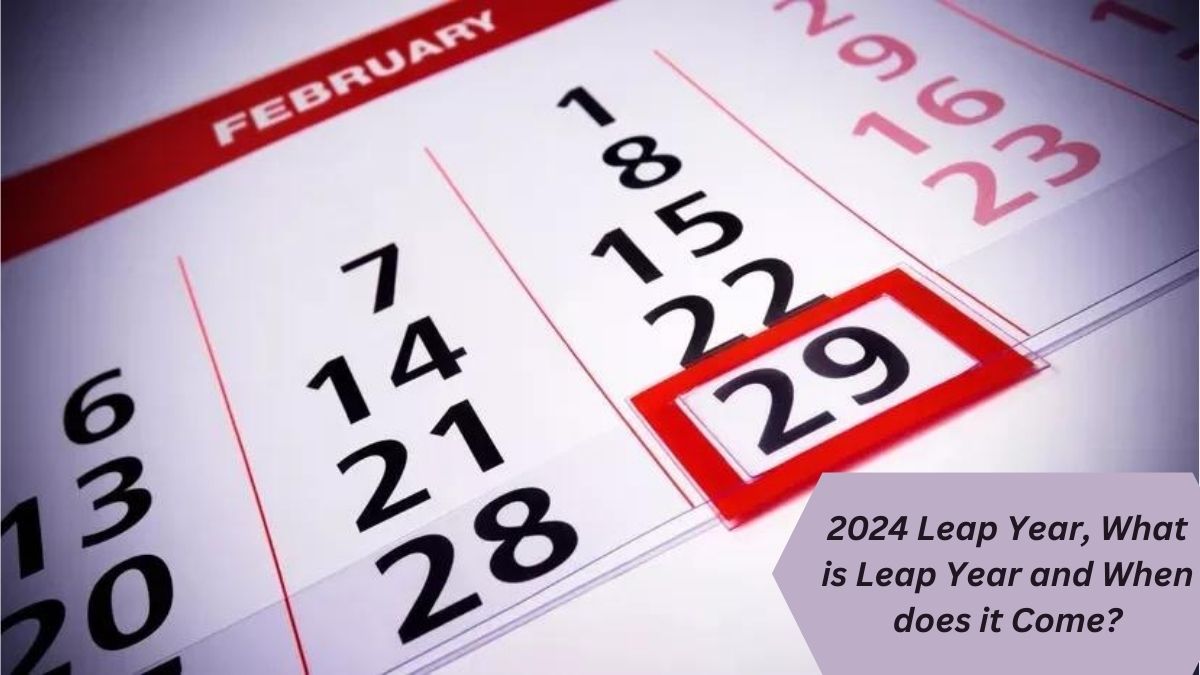The year 2024 is a leap year, adding one extra day to February. While many are aware that a leap year occurs every four years, the concept might not be fully understood. This article delves into the intricacies of leap years, their historical origin, and the significance of the extra day.
What is a Leap Year?
A leap year consists of 366 days, as opposed to the regular 365 days in a standard year. The additional day is added to the shortest month of the year, February, as February 29.
Why was a Leap Year Introduced?
The concept of a leap year was introduced to account for the extra time it takes the Earth to complete one orbit around the Sun. A solar year is approximately 365 days, 5 hours, 48 minutes, and 46 seconds. To address this, an extra day is added every fourth year, totaling 366 days. Without this adjustment, crop cycles and seasons would gradually drift out of sync, leading to confusion.
Leap Year 2024: Historical Background
The leap year was introduced by scholars engaged by Julius Caesar in 46 BC and further refined in 12 AD. The Julian calendar, which followed a 365-day year with an additional day every four years, was an early attempt to synchronize the calendar with the solar year. However, it was not perfect, leading to additional adjustments in the 16th century.
Gregorian Calendar Reforms
In 1582, Pope Gregory XIII initiated significant reforms to address the discrepancies in the Julian calendar. Recognizing a cumulative error, 10 days were dropped from the calendar. October 4, 1582, was followed by October 15, 1582. This drastic step aimed to realign the calendar with the solar year.
Why Not Every Fourth Year?
While the Julian calendar attempted to rectify the error, it wasn’t sufficient. To fine-tune the system, a decision was made to omit some leap years, specifically about one leap year every century. The chosen years for omission were those ending with 00. However, a blanket exclusion of all years ending with 00 would create new inaccuracies. In the Gregorian calendar, the compromise was to consider years ending with 00 as leap years only if they were divisible by 400. This led to the exclusion of the leap year in 1900 but its inclusion in 2000.
Leap Year Traditions and Superstitions
- Leap day isn’t just a numerical adjustment; it carries interesting traditions and superstitions:
- Sadie Hawkins Day: Originating from a 1937 comic strip, this day encourages women to break gender norms by proposing or asking men out on dates.
- Marriage Superstitions: Some cultures associate leap day with bad luck for marriages. In Scotland, it was believed to be a day of mischief caused by witches, while in Greece, tying the knot during a leap year, especially on leap day, was discouraged.
- Special Events and Festivals: Leap day is celebrated by some unique events and festivals. The Honor Society of Leap Year Day Babies, for example, is a club for individuals born on February 29.
Important Questions Related to Exams
Q1. What is a leap year, and how many days does it consist of?
Q2. Why was the concept of a leap year introduced?
Q3. When was the leap year introduced, and by whom?
Q4. What is Sadie Hawkins Day, and when did it originate?
Check your knowledge and try to answer the questions in the comment section.





 Which City is known as the City of Bambo...
Which City is known as the City of Bambo...
 Who was the First Home Minister of India...
Who was the First Home Minister of India...







